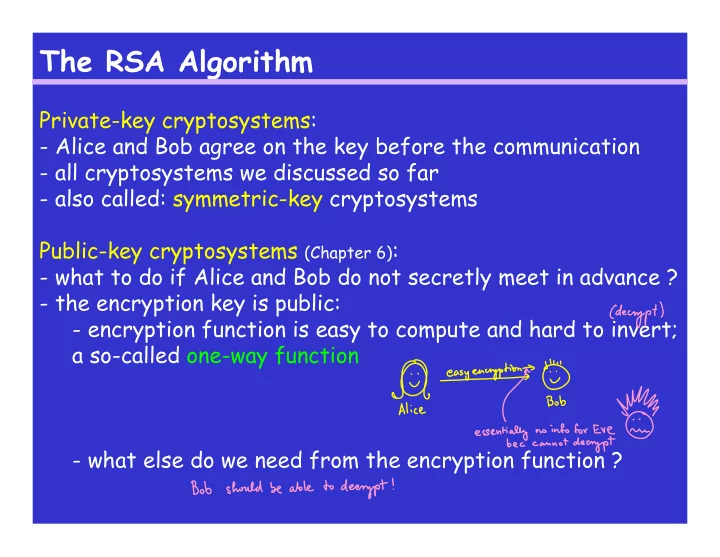

The RSA Algorithm Private-key cryptosystems: - Alice and Bob agree on the key before the communication - all cryptosystems we discussed so far - also called: symmetric-key cryptosystems Public-key cryptosystems (Chapter 6) : - what to do if Alice and Bob do not secretly meet in advance ? - the encryption key is public: - encryption function is easy to compute and hard to invert; a so-called one-way function - what else do we need from the encryption function ?
The RSA Algorithm Remarks: - we do not know if one-way functions exist… - we work with functions that are believed to be one-way - a one-way function that is easy to invert if one has a corresponding private key (a trapdoor) is called a trapdoor one-way function
The RSA Algorithm Public-key cryptography: - Diffie-Helman, 1976 (it was documented earlier in classified documents) - Rivest-Shamir-Adleman, 1977: The RSA Cryptosystem - never give perfect secrecy – why not ? Note: - public-key cryptosystems usually used to encrypt a private key, not the complete message – why ?
The RSA Algorithm 1. Bob chooses secret odd primes p and q, computes n=pq. 2. Bob chooses e with gcd(e, Φ (n))=1. 3. Bob computes d = e -1 mod Φ (n). 4. Bob makes n and e public, keeps p, q, and d private. 5. Alice encrypts m ∈ Z n as c = m e mod n and sends c to Bob. 6. Bob decrypts by computing m = c d mod n. What is Φ (n) ?
Recommend
More recommend